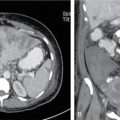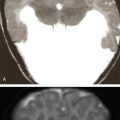Aman Khurana, Leslie Wilmet Nelson, Dinesh Chinchure The future belongs to those who learn more skills and combine them in creative ways. Robert Greene This chapter is intended to cover few general conceptual and practical noninterpretative skills (NIS) information. The important components of the NIS are Safety culture, Professionalism, Root cause analysis (RCA), Communication, Quality improvement and Error reduction. All the physicians share the responsibility and few fundamental principles which are outlined in the physician charter supported by American Board of Internal Medicine. They revolve around three fundamental principles – Principle of patient autonomy (physicians need to be honest with patients and let them decide their course of treatments), Principle of primacy of patient welfare (physicians must be dedicated to serving the interest of the patient) and Principle of social justice (promotion of fair distribution of healthcare resources). Multiple professional physician responsibilities can be grouped under: The rapid rise and explosion of social media has affected medical profession in more than one way. On one hand, it offers a great opportunity to disseminate information rapidly to like-minded individuals but on the other side of coin there is concern that whether it undermines professionalism and ethical behaviour. Posting professional content on personal accounts must be avoided as there is serious concern of breach of patient privacy. Many licensing authorities all over the world have encountered unethical behaviour leading to suspension or revocation of doctor’s licenses and registrations. Many guidelines exist published by medical councils, employers and government ministries which provide recommendations for safe use of social media. Despite concerns over the safe use, social media offers a useful tool to reach out the other professionals across the globe and one should carefully harness its potential for ethical use. Research in radiology is an ongoing and ever-changing process as new imaging modalities are added every few decades along with faster and more efficient scanners providing robust image quality but still leaving plenty of room for improvement. This can be divided into two major categories – a). clinical/preclinical and b). quality and safety research. Clinical and preclinical research has been in the centre of developing imaging technologies beginning from radiography and ultrasound imaging modalities to magnetic resonance imaging (MRI) and positron emission tomography (PET) using various new ‘molecular imaging’ contrast agents and others. Early research papers focused on classic imaging signs which were required to accurately diagnose various clinical pathologies without need for surgery but as the field of radiology and medicine evolved over time, clinical and preclinical research in radiology has boomed. Imaging has proven to be a superb example of the impact of strong interdisciplinary collaborations between basic scientists and clinicians. Various computer-assisted approaches and tools ranging from clinical decision support systems and computer-aided detection software create a never-ending need for ongoing research in radiology. Newer technologies such as machine learning and artificial intelligence need to be constantly compared with traditional radiological interpretation and therefore more head-to-head comparative studies are needed in every subspecialty of radiology. There is growing need to introduce the concept of research in radiology to radiology trainees early in their career because this experience provides an important insight into academics and help decide the trainee their future career path. Most trainees lean towards retrospective research in radiology given their time limitations. This process should start with selection of an appropriate mentor and mentee and discussing important research topics, research expectations and deadlines. Trainees and mentors should simultaneously perform literature search in 1–2 weeks and then come up with a research design to submit a successful institutional review board (IRB) application. After IRB approval, comprehensive and definitive search design becomes imperative to reduce selection bias and thereby including a large number of initial subjects to reduce repeated searches. After spreadsheet creation, mentors should review the data entry design before and after collection of few initial patient data. Thereafter, a statistician can help the trainee with analyzing data to provide significance to specific observations and accepting or rejecting specific hypotheses. Stepwise approach to manuscript composition is key for ensuring continuous interaction between the mentor and trainee and to ensure that writing style and the direction of the paper are consistent between primary and senior coauthors. Promoting quality and safety research has also become very essential for radiology as case reimbursements have been increasingly tied to measures of patient safety, efficiency, quality and appropriateness of imaging. Paramount importance should be given to establishing and maintaining a culture of safety in organization who wish to improve patient care and patient experience. This creates a need for educational curricula which are aimed towards teaching quality and safety-related skills. There are still few barriers to integrating quality and safety education into medical student and resident curricula given constraints of current resident/fellow curricula and need for trading clinical services with these ‘newly’ required modules. Quality in radiology is usually defined by two interconnected dimensions: excellence and consistency. Excellent care needs to be provided in a consistent basis, otherwise it’s classified as poor quality. This high-quality care needs to be provided by using methods that are consistent with current professional knowledge. Consistent quality cannot be achieved in the absence of performance standards or measurements; therefore, performance needs to be monitored. To conclude, we need to maximize the likelihood of desired health outcomes and to satisfy the patient. Three different quality metrics have been studied:
1.35: Non-interpretative skills in radiology
Core elements of professionalism
Professionalism and social media
Research in radiology
Stay updated, free articles. Join our Telegram channel

Full access? Get Clinical Tree








